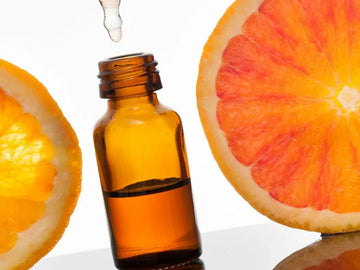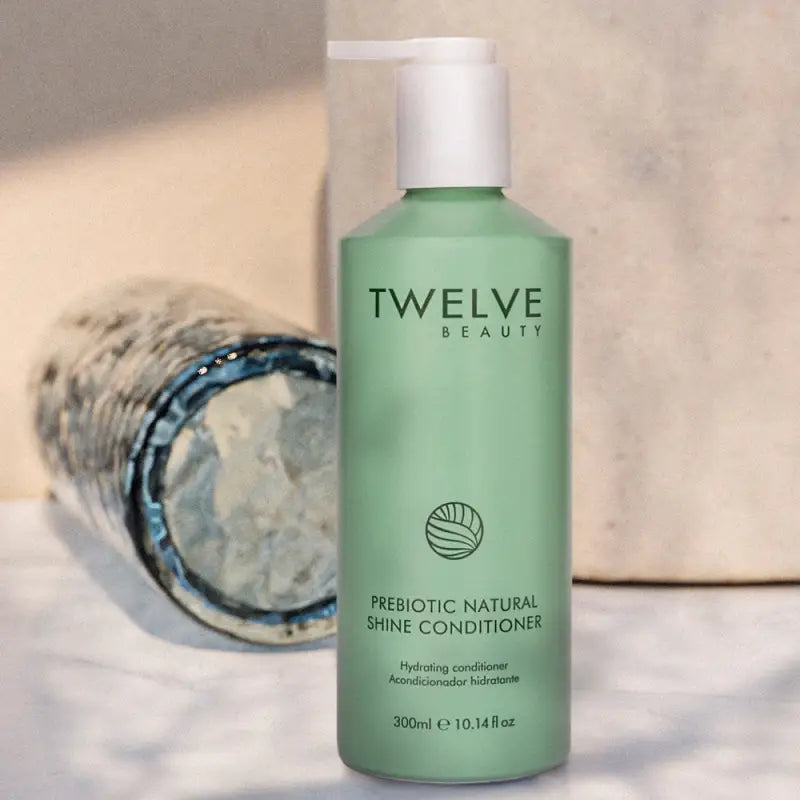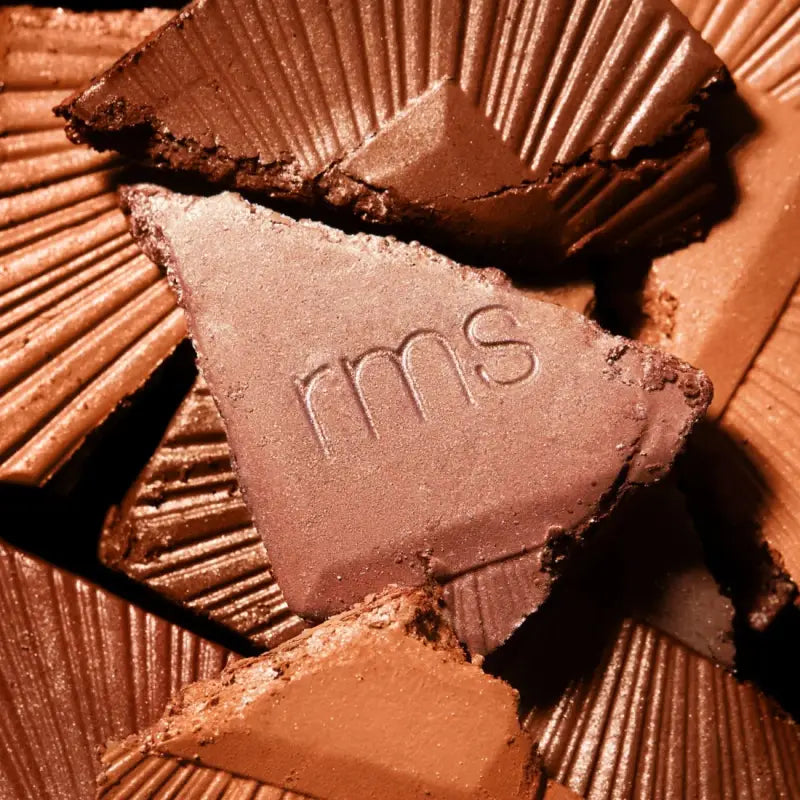All skin types benefit from exfoliation. Air pollution, stress, not enough rest and sleep, an imbalanced diet – all of these contribute to our skin becoming dull and greyish. And, with time, there’s the added element of natural decrease in our body’s collagen production, which results in a lesser elasticity of the skin. Whether physical or chemical, the exfoliators remove the dead skin cells and impurities, unclog the pores, and improve the blood circulation. The end result will be smoother, younger-looking, and more luminous skin. With so many different product types out there, it might end up being difficult to decide which one is the right one for ourselves. So, here are our Top 10 favourite natural exfoliating products:
Do you have dull skin with blemishes? How about the loss of elasticity? If so, this is your go-to formula. This micro-algae based granular peel will leave your skin softer and glowing by removing the dead cells. It is enriched with soothing hazelnut oil and almond pulp. Zinc takes care of the excess sebum. The AHAs from lemon, blueberry, orange, maple, and sugar cane will stimulate the regeneration of your skin. Organic. Added bonus: the price.

All skin types will benefit hugely from this detoxing, peeling, brightening, and firming probiotics masque, which is activated by water. Four synergies act to cater to all skin types needs. The enzymes and fruit acids dissolve the dead skin cells. Clay combined with activated charcoal reduces the blemishes. Vitamin C with enzymes contribute to the radiance, and Vitamin C & probiotics take care of the firmness. On top of that, it’s both gluten-free and GMO-free.

This award-winning, luscious concentrate of super-powerful botanicals and mineral clay was inspired by a prenuptial ritual, in which the bride and groom would be covered in ground herbs to symbolically shed their old skin and life. You can use it two ways: mixed with a bit of rose water as a deep detox mask that adds an instant glow to your skin (thanks to the Kashmiri saffron), or to deeply hydrate and nourish super dry skin and even out scars (thanks to the Mysore sandalwood). Our personal favourite both as a fragrance and as an active ingredient is the refining anti-inflammatory otto rose. Recommended for all skin types, including oily.

The scrumptious passion fruit (plus lactic acid enriched with Vitamin C) exfoliates and brightens the skin. It’s overall magical, thanks to the skin-plumping sodium hyaluronate, soothing aloe vera, and jojoba that protects the skin against the stress factors in the environment. What to expect? Super refreshed, even skin that’s motivated to regenerate its cells. 71.4% organic. Vegan friendly.

What a festival for the senses this luminising enzyme cleanser and mask is. Imagine organic raw cacao with raw rainforest honey from Hawaii, maracuja and rosehip oils, and gentle white clay combined together. What you’ll get will be a skin-plumping, hydrating, deep cleansing, gentle dead skin cells removing, circulation stimulating, regenerating, and rejuvenating cocktail for a glowy complexion. We’re smitten.
-
EVOLVE ORGANIC BEAUTY RADIANT GLOW ORGANIC FACE MASK

We found another gem packed with antioxidants, vitamins A, Bs, C, E, magnesium, and the fatty Omega 6 acid. The goal: to purify, revitalise, moisturise, buff, soothe, and rejuvenate the skin. How: blend together raw cacao powder, coconut granules, sweet almond oil, and clay and add organic vanilla oil fragrance. For all skin types.

Super kind and smooth trinity. When buying this product, you’ll be getting cleansing gel with face oil and peeling all in one. Fine bamboo powder and poppy seeds combat the dead skin cells. The surprising oil-gel milky emulsion contains beautifying plumping vitamins and omega fatty acids. Apt for all skin types.
This patented product refines texture and reduces the appearance of fine lines and wrinkles. Alpha and beta hydroxy acids exfoliate and unclog the pores. Vitamins A, C, and E nourish your skin and lighten dark spots, thus adding radiance. We love this antioxidant bomb of willow bark extract and apple juice with citric acid and sugar cane.

This 100% eco-certified two-step peel contains the active combination of Australian Eucalyptus exfoliating micro-pearls with anti-ageing QAI® Complex – plus The Triple Collagen®. First, the spherical micro-pearls will gently act on the impurities and dead cells; then, the essential plant oils and the anti-ageing QAI® Complex provide the antioxidants and hydrate the skin. The final effect? Transformation of the skin into a smoother and brighter version of itself.

If your skin has lost its radiance, this is the treatment you’re after. It can be used daily and is super effective in deep cleansing. This mix of fermented superfoods like acerola cherry and pomegranate act against free radicals. You can combine it in desired proportions with the soothing ingredients of the mix: aloe vera powder, jojoba beads, and rice. It’s the only exfoliator that can be adaptable as your needs change.
HOW TO CHOOSE NATURAL EXFOLIATOR & PEELS. STEP ONE: GO NATURAL
Nature is the best pharmacist and beautician. The higher the percentage of natural ingredients in the cosmetics, the healthier and gentler they will be for our system, without taking away from the efficiency. All the opposite as a matter of fact.
NATURAL AND ORGANIC EXFOLIATORS
One would want to think that they are one and the same thing, but are they?
Natural cosmetics are basically made of natural ingredients. They can contain plant, animal, or mineral ingredients. They must be obtained with respect for the environment and without harming the animals. They may contain a minimum amount of synthetic ingredients.
Organic cosmetics: These products undergo a more restrictive production process. They are partly natural products, but they must contain about 90-95% of organic raw materials – those that are certified as organic and come from controlled crops. Organic cosmetics should not contain artificial fertilisers or pesticides. They have to have proper certification of organic origin. Unfortunately, not every certificate provides 100% of the composition. Some certifying organisations allow synthetic ingredients to some extent. Some of the organisations that can be trusted are EcoCert and USDA Organic (U.S. Department of Agriculture certified).
Both groups of cosmetics should have biodegradable packaging.
STEP TWO: CHOOSE YOUR IDEAL SCRUB OR PEELING
The exfoliators are divided into two groups, chemical and physical. Both can be safely used at home, as long they are gentle enough. Like with everything, you can overdo it even with these cosmetics.
The chemical exfoliators use natural enzymes or acids to dissolve the dead skin cells and impurities, whereas the physical exfoliators use micro-grains such as jojoba powder, crushed strawberry seeds, blackberry seeds etc.
This is the simplest way to divide the exfoliators:
- Chemical Peels:
- Enzyme peeling
- Acid peelings
- Physical Peels
- Fine-grained peelings
- Scrubs or coarse-grained peelings
CHEMICAL PEELS
They contain active ingredients, such as:
- Proteolytic enzymes of plant origin, or
- Fruit acids. These are:
- AHA, Alpha Hydroxy Acids, such as malic, glycolic, or lactic acid. AHAs contribute to the production of collagen, which results in fighting fine lines and wrinkles. Recommended for dry skins.
- BHA, Beta Hydroxy Acids, such as salicylic acid obtained from willow bark. BHAs’ antimicrobial and anti-inflammatory properties help fight the breakouts of the blackheads and the acne. Recommended for oily skin.
The fruit acids are obtained, for example, from papaya, lemon, apple, pineapple, or grape.
The chemical peels are designed to improve the condition of the skin by chemically exfoliating the epidermis. This is done through the dissolving of the proteins that are largely made up of dead skin cells, dirt and oil.
They unclog the pores and provide deep cleansing to the skin. The enzymes stimulate regeneration by accelerating the formation of new cells. The skin after the use of natural enzyme peeling is smooth, brightened, moisturised, and nourished. This type of cosmetic does not only work superficially but also penetrates into the deeper layers of the skin, thus cleansing the pores and removing impurities.
They are enriched with a number of components that moisturise the skin, nourish it and improve its elasticity.
The more sensitive, prone to redness and acne the skin, the more gentle the peeling should be
Examples of some of the enzymes used in the peels:
Cranberry extract:
Lifts and slows down the ageing process of the skin. Cranberries provide valuable vitamins and microelements, strengthening the skin’s immune resistance. The fruit extract also contains compounds from the group of flavonoids that have antioxidant properties (protect against free radicals and prevent unwanted skin changes) and strengthen the skin. Cranberries and cosmetics made of them are also anti-inflammatory, anti-allergic, anti-swelling, and soothing.
Apple extract:
Is often an ingredient of natural peelings because it has delicately exfoliating properties. This fruit raw material, like cranberries, is a rich source of antioxidant flavonoids. In addition, it contains regenerating fetoproteins, bactericidal phenols and valuable pectins, mineral salts, and vitamins: A, B, C, and K. There are also hydroxylic acids. Natural enzyme peeling with apple extract acts as an antioxidant and protects skin cells. It also stimulates the reconstruction of the epidermis, moisturises and cleans the skin. It has a positive effect on blood vessels and firms the skin.
PHYSICAL PEELS
The scrubs or coarse-grain peelings are, in a way, more aggressive to the skin because they literally scrub off the dead cells. Scrubs exfoliate mechanically through the abrasive micro-grains, which polish the skin’s surface. You can control the intensity of the treatment by applying more or less pressure on the skin. These particles might be salt, sugar, walnut shell powder, or bicarbonate. The scrubs deep clean the skin and take care of removing the blackheads, simultaneously reactivating microcirculation. People with sensitive or acne-prone skin should opt-out of scrubs in favour of peelings.
The fine-grained peelings are more gentle on the skin and rich in natural components. This makes them suitable for all skin types. In order for the particles contained in the peeling to effectively rub off dead skin cells, a gentle massage should be performed when applying the cosmetic to cleansed skin. They restore skin facial softness, remove impurities, and have an added refreshing effect. They even out the skin tone and make it radiant. Some of them are so gentle that they can be used on the lips.
Some plant extracts used in the fine-grained peelings are:
Basil Extract
Basil contains valuable disinfecting terpenes, and bactericidal tannins, as well as antiviral and antifungal saponins. It is also a source of the aforementioned flavonoids, which have antioxidant properties and create a natural barrier against UV radiation. Natural fine-grained peeling with basil extract provides the skin with healthy vitamins A, C, and K, and minerals: iron, calcium, and magnesium. In addition, it inhibits inflammation and soothes tired skin.
Liquorice Extract
Liquorice is perfect for the care of oily and acne-prone skin. It reduces the formation of unsightly skin changes and inhibits the secretion of sebum. Liquorice extract has anti-inflammatory and antioxidant properties. It also protects the skin against the harmful effects of solar radiation. Peeling, which contains liquorice extract, evens out the colour and brightens the complexion. Ecological liquorice cosmetics do not cause irritation, so they are perfect for all skin types, including sensitive and allergy-prone skin.
Shea Butter
Shea butter is a certified natural raw material of plant origin. Perfectly cares for all skin types. Shea butter is one of the natural sunscreen filters and a rich source of antioxidants. As a result, the natural peeling, with its addition, has anti-ageing and protective properties. Shea butter also contains vitamins A, E and F and healthy unsaturated fatty acids that help rebuild the epidermis. A natural peeling with shea butter has anti-swelling, anti-inflammatory and antibacterial properties. It soothes irritations, revitalises and smoothes the skin.
HOW OFTEN TO USE EXFOLIATORS
It is advisable to exfoliate the epidermis at least once a week, throughout the year. You can adjust the regimen to your skin needs, but we don’t recommend doing it more than 3 times a week for sensitive skin. For normal skin, you can even go up to 5 times a week.
HOW TO PROPERLY EXFOLIATE, STEP BY STEP
- Before application of any exfoliator, the skin has to be thoroughly cleaned.
- For the peelings containing grains, two techniques can be used – dry application and wet application using a special glove.
- If using a granular peel, perform a gentle massage.
- For an enzyme peeling – put it on the skin and leave it for a few minutes.
- Rinse the cosmetic with warm water and wipe the body.
- For a better effect, you can apply an antioxidant tonic after peeling.
- Moisturise the skin, preferably by applying a deep hydration mask, which will also tighten the pores.
WHAT TO AVOID WHILE CHOOSING NATURAL EXFOLIATORS AND PEELS
When using natural peelings, it’s important that you choose one that is not too powerful, as instead of improving the skin, they can actually damage the epidermis. Some experts advise you to be very cautious with using the acid peelings at home. When used correctly, acid peels are fabulous – but one mishap and your skin can get irritated and slightly burnt. If the acid is too strong, the exposure is too long, or the removal is inadequate, it’s for the skin.
What else to avoid? Do not apply pores-blocking types of sunscreens and avoid sun exposure after exfoliation. Retinol and benzoyl peroxide are a bad match for scrubs too. Avoid using exfoliating products on blemished or damaged skin and also do not risk it before an important event in case your skin overreacts.
CONCLUSION
All skin types benefit from exfoliation treatments. Go natural, in all your cosmetics whenever possible. Make sure to select the right type of peel for your skin. In brief: if your skin is sensitive or prone to acne, you should skip scrubs and use either BHA acid peels, fine-grained peelings, or enzyme-based ones. Other types of skins might benefit from AHA acid base, coarse grain treatment, and enzyme peels as well. Above all, remember that no skin treatment will work miracles if you don’t get the right amount of sleep and hydration and if you simply don’t enjoy your beauty to start with.



















